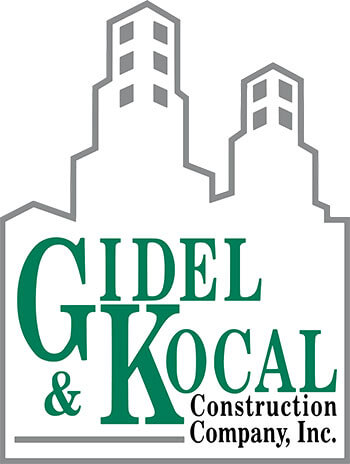“Failure to plan is planning to fail.” This interpretation of a Benjamin Franklin quote sums up the importance of construction planning. This critical component to preconstruction is the key to a successful outcome when building any structure, commercial construction included. Construction planning involves developing a roadmap for how a project will pan out. It lays out the order of specific tasks, identifies who will perform them, proposes a budget, discusses resource allocation, and accounts for client specifications. All of these are integral to yielding a satisfactory final result for both clients and stakeholders in any given commercial construction project.

In a somewhat theoretical sense, construction planning could be thought of as a form of reverse engineering. Every construction project begins with a client having an idea. The role of the general contractor is to execute that idea and turn it from a concept into something tangible. The steps involved in construction planning break down everything that is needed along the way. Gidel & Kocal is an experienced commercial general contractor in the San Francisco Bay Area with expertise in construction planning. While the term “planning” may give many people the impression that this process only occurs during preconstruction, the truth is that building construction planning is integral every step of the way in a commercial buildout. Having a proven method and understanding everything that goes into it is the best way to position yourself for success in construction.
Benefits of Construction Planning in Commercial Construction
If the question of “What is construction planning?” has popped up for you once or twice, know that you’re not alone. Not everyone knows what goes into construction planning for commercial buildings. What’s more, while there is a general process upheld by most general contractors, every company puts their own spin on things.
In addition to knowing the steps of building construction planning, it is equally important to understand its benefits. Some of the main benefits of construction planning include:
- Timely completion of construction projects
- Cost-effective measures implemented from the beginning
- Efficient process rollout
- Implementation of proven procurement strategies
- Enhanced accountability across all parties
- Clear establishment of responsibilities
- More effective communication
Core Components of Commercial Construction Planning at Gidel & Kocal
What is involved in commercial construction planning? Regardless of the general contractor or project manager assigned to the job, there are several core components that every construction plan must include:
- Project scope
- Budget
- Detailed construction schedule
- Resource allocation
- Risk assessment
Each component greatly contributes to the overall success of the project. These may seem simplistic, but once the planning gets underway, each part gets broken down with much more detail and specificity.
A Step-by-Step Guide to Construction Planning for Commercial Projects
The following guide should serve as an outline for construction planning initiatives. In essence, this lays out what you need for commercial building construction planning to go well. Experienced general contractors like Gidel & Kocal follow this format to ensure success regardless of the industry or type of building we’re working on.
1. Project Scope & Initiation
During this stage, the client will work with the general contractor to define the objectives and goals, identify all stakeholders and their roles, and assign responsibilities to each part of the project team.
2. Constructability & Feasibility
This stage involves the general contractor assessing the feasibility of a project in terms of cost, time, and resources. Questions such as, “How realistic is it to build this structure within this timeframe and budget?” might be posed. A feasibility study will also analyze the potential risks, time and budgetary constraints, and whether the anticipated project will pass local zoning and building codes.
3. Site Selection and Preparation
Next comes the site selection and preparation for the commercial building. Getting this right is critical for construction planning, as the subsequent construction cannot occur unless all necessary permits and approvals are obtained for the site development.
4. Design & Approvals
During the design phase, architects and engineers will collaborate with the general contractor to produce detailed construction plans. This part of construction planning involves developing a project schedule and budget as well as any additional design approvals and permits.
5. Procurement, Contracting, and Subcontracting
At this stage, the general contractor will have chosen their designated subcontractors for the job. Gidel & Kocal has strong relationships with a selection of licensed, insured, and experienced subcontractors across all specialties including electrical, plumbing, and other subsets. The craftsmen we choose have proven track records and will always go the extra mile to see that all projects are completed the Gidel & Kocal way.
Another component of this step of construction planning is procurement. The general contractor will go about procuring materials, resources, and equipment accordingly.
6. Construction Scheduling
Once the procurement method has been solidified and the subcontractors’ bid proposals have been accepted, you can move onto the next phase of a building’s construction planning, which is creating a schedule. Outlining milestones and deadlines occurs here, as does factoring in additional considerations like resource availability, site conditions, and backup plans.
7. Quality Control & Monitoring
While this step is listed as its own, the truth is that monitoring and quality control checks should be implemented throughout the entirety of the project. Part of responsible construction planning is identifying how progress will be tracked. This may take shape in many forms, including using specific project management software to generate progress reports. Our approach at Gidel & Kocal is such that our clients are kept informed every step of the way. At a minimum, we implement weekly updates to ensure that clients and stakeholders are never unaware of the status of their projects.
8. Project Closeout & Evaluation
Even before the actual construction gets started, a high quality general contractor will know how it will end. Construction planning for commercial buildings is detailed and meticulous all the way up to the project’s completion. The general contractor must have a plan in place for conducting the final inspections, performing quality checks, and handing over the completed project to the building owner.
Once this is done, the construction company and their team will review their performance and discuss what went well in addition to what could be improved upon in the future.
Although not included in the aforementioned steps, there are other components that make for successful construction planning. Adherence to and fully understanding the client’s specifications is key, as is effective communication and collaboration between all teams.
Real-Life Examples of Successful Planning in Commercial Construction
At Gidel & Kocal, we’re powered by our ability to plan well. All of our commercial construction projects are the result of well thought-out and executed construction planning. Just some of our shining examples are listed below.
Pre-Construction & Construction of Nitrome Biosciences
While Gidel & Kocal was initially hired for pre-construction services for this project, the construction planning went so well that the client awarded us the construction as well. This included complex modifications to the building core MEP infrastructure and floor-by-floor Lab Tenant improvement build-outs.
Tenant Improvement for GreatPoint Ventures
This commercial construction project involved the demolition of an existing space as well as the build-out of office spaces, conference rooms, an open office area, brand new restrooms, and a breakroom.
Exterior Amenities Remodel for 1 McInnis Parkway
Improving the exterior of this property required significant hardscaping initiatives including removal of existing furniture, resetting pavers, and installing new lighting and decor.
To see additional examples of construction planning in action with Gidel & Kocal, we encourage you to explore several other of our completed projects.
Learn more about how the right construction planning can deliver a successful outcome when you partner with the best. Contact us today to get started.
